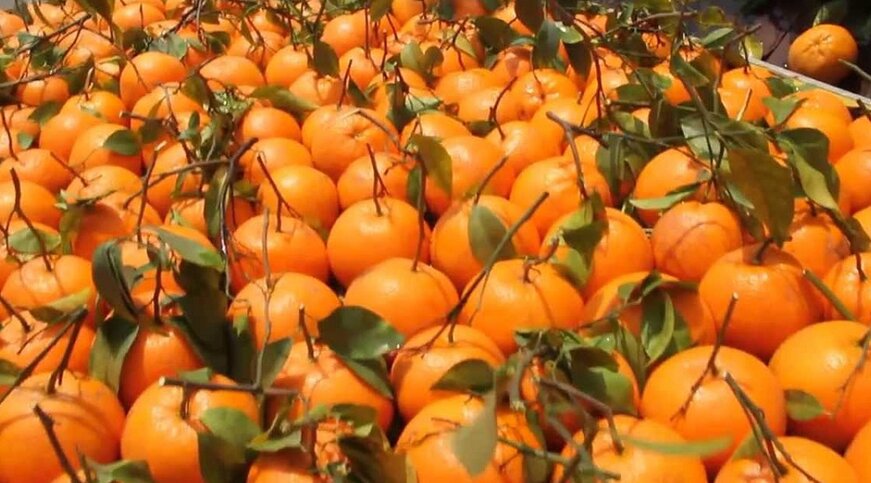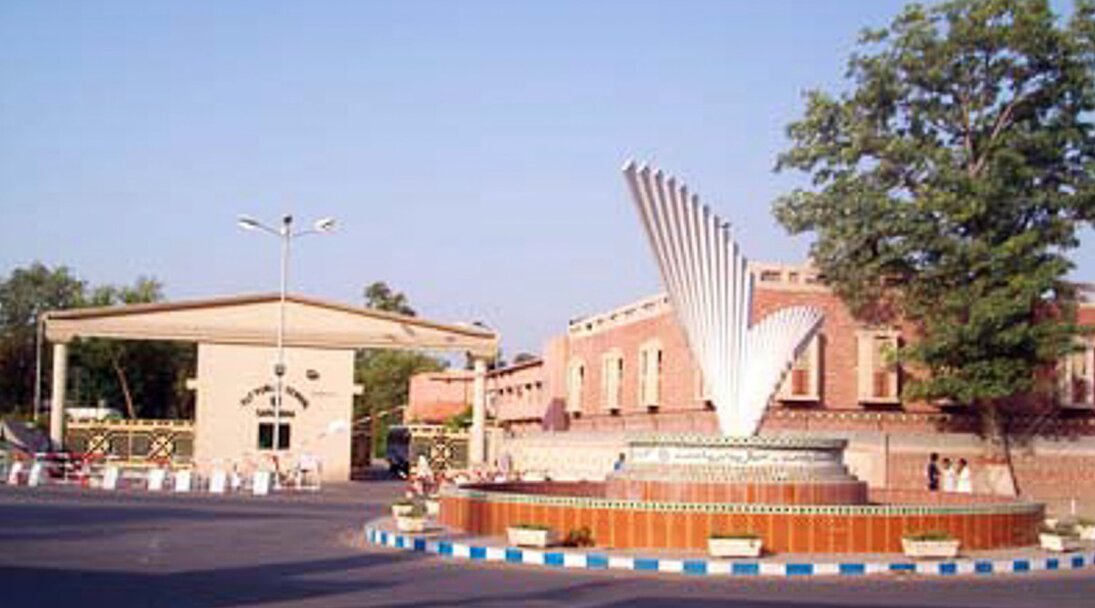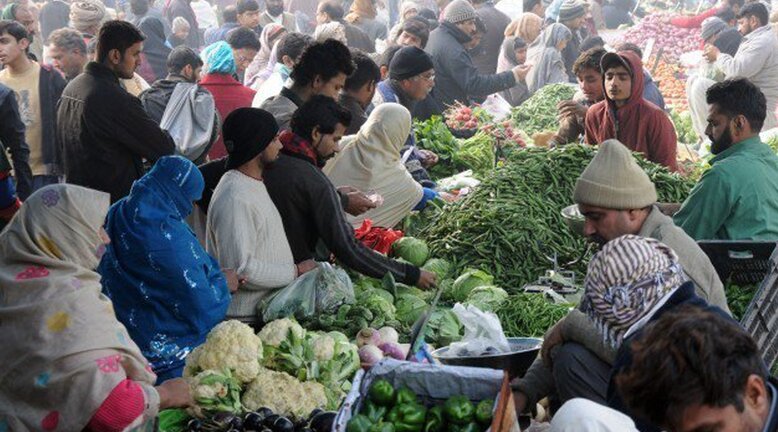Sargodha is a beautiful city in southern Punjab, Pakistan. It is a grain and cash crop market that is connected to Lahore and Mianwali by road. It is connected to Faislabbad by railroads. Sargodha is home to a variety of industries that include the wheat processing and flour industry, cotton gins, textiles, hosiery, oilseed mills, soap, and other chemical factories. The city was founded as the headquarters for Lower Jhelum Canal in 1903. Its status was changed to that of a municipality in 1914.
Sargodha at a Glance: Famous Fruits, Places, and Cultural Landmarks
Sargodha is a developed city with its own hospitals, libraries, colleges, and stadiums. It has an appropriate education system and most of its colleges are affiliated with the University of Punjab. Sargodha is the 12th largest city in Pakistan by population. It is one of the fastest-growing cities in Pakistan. It is one of the few planned cities in Pakistan. The list includes Islamabad, Gwadar, and Faisalabad as well.
History of Sargodha
Sargodha was initially a British canal colony. It was spelled as ‘Sargoda’. Wikipedia talks of its name origins as “The word Sargodha has its origin in the words “Sar” (from sarowar) meaning pond and Godha meaning Sadhu, which means “Pond of Godha”. In 1903 shortly after its establishment, Sargodha suffered the deadly bubonic plague. It experienced a milder version of the plague in 1904, after which it completely died down. Even though it was a small town, the British Royal Airforce built an airport at Sargodha because of its strategic location. Lady Trooper laid the foundations of this city with the supervision of Sir Charles Montgomery Rivaz KCSI. He was the colonial administrator of British India and the Lieutenant Governor of Punjab from 1902 to 1907.
Sports in Sargodha
Sargodha has a state-of-the-art cricket stadium, which is called Sargodha Cricket Stadium. Sargodha’s cricket team is amongst the finest in Pakistan. It represents Sargodha in regional tournaments. They were part of Pakistan’s first-class cricket tournaments in 1961-62 and 2002-2003. Sargodha is also home to a grand sports complex which is located adjacent to the cricket stadium. The sports complex has a well equipped gym, as well tennis courts, badminton, and basketball courts. Karate classes also take place regularly at the complex. These classes are for kids older than 5 and teens. Another sports complex, Galaxy Sports Complex, provides citizens with a sporty platform.
Mela Mandi Ground is a popular location for sports and recreation in Sargodha. The ground is mostly used for cricket and football. This ground is home to the annual sports competitions that are held in the city every March, which is the spring month. The mela mandi ground was specifically constructed to provide a vast ground for sporting activities. A hockey stadium is located near the mela mandi ground. This stadium is called Sargodha Astroturf Hockey Stadium. Sargodha’s district hockey team plays here, and it provides a reliable platform for new talent to showcase their skills. A floodlit football ground is under construction near Company Bagh in the city.
Related: Fun activities for teenagers in Pakistan
Food and Drink of Sargodha
The food and cuisine of Sargodha are very similar to the rest of Pakistan, especially Punjab. Some of the dishes originate from the royal kitchens of the Mughal empire of the 16th century. In addition to that, most food staples and dishes trace their roots in british, central Asian, middle eastern, and Indian cuisine. Pakistani cuisine generally requires large amounts of herbs and spices that give them their distinct flavor. Onions, ginger, garlic, cloves, peppers, cinnamon, red chili, turmeric, cardamoms, and other garam masala are recurrent features in the food of Sargodha. Roti and rice are food staples that are served with curries, lentils, meat, and fish.
When it comes to drinks, lassi takes the icing in Punjab. Both sweet and salty lassi are favorites in Sargodha. In addition to lassi, tea is consumed copiously. Tea leaves with milk and sugar, and green tea are considered favorites throughout the city. Tea is consumed primarily to keep active and warm during winter months.
In recent decades, fast food is gaining popularity in Sargodha. There are numerous local fast-food chains that serve quality burgers and pizzas. Along with the local fast food joints, several international fast-food chains also operate in the city including McDonald’s, KFC, Pizza Hut, and Subway. It must be noted that the world’s biggest Gloria Jeans is set to open in Sargodha.
Related: Top Mouth-watering Breakfast Places in Lahore
Air Base in Sargodha: The Eagles
Sargodha is home to an established Pakistan Airforce base. It was previously known as PAF Base Sargodha and later had its name changed to PAF Base Mushaf. In 2003, the name of the base was changed to honor the former base commander and chief of the air staff Air Chief Marshal Mushaf Ali Mir. His aircraft crashed when he was doing the routine patrol near Kohat in February 2003. The base is a Major Operational Base or the MOB of the Pakistan Airforce. The PAF’s Central Air Command (CAC), the Combat Commanders’ School (CCS), and the PAF Airpower Center of Excellence (PAF ACE) are based at PAF Base Mushaf.
There was a suicde bomber attack on the base on 1st November, 2007. The bomber attacked a 50-seat bus carrying PAF officers to the nearby Kirana Ammunition Depot. 11 people embraced shahadat and 28 were injured in the attack. This suicide bombing happened on the Faislabad Road. The suicide bomber was traveling on a motorbike. He rammed his bike on the bus which resulted in a blast. The officers on the bus were new recruits who were posted to Pakistan Airforce Base Mushaf for training. This was the final major terrorist attack before the state of emergency was imposed on the country.
Because of the presence of the PAF base, Sargodha is known as the City of Eagles.
Climate and Demography of Sargodha
Sargodha is a city of extreme heat. The winter is moderate. The maximum temperature that reaches the city is 50 degrees in the shade in summer, while the minimum temperature recorded in winter was as low as the freezing point (0 degree). The extreme summer is combated by drinking plenty of fluids and remaining in shade. The total population of Sargodha is 458,400 according to the 1998 census. The majority of the people in Sargodha speak Punjabi with the Shahpuri dialect. According to the 2017 census of Pakistan, the population of Sargodha had reached 8,181,499, which is a 50 percent rise from 1998.
Education in Sargodha
The literacy rate of Sargodha was 67.8% in 1998, which increased to a bright 80.5% in 2017. Sargodha city is considered to be the hub of education for the Sargodha division, which handles a population of 8.1 million people. There are four universities, and a number of colleges for medical sciences, IT, commerce, law, intermediate courses, and engineering. The famous Quaid e Azam Law College is situated in Sargodha, which is the most sought-after institute for law education.
The board of intermediate and secondary education manages the city of sargodha when it comes to secondary and college education. This board was established in 1968. Here is the list of schools, colleges, and universities in Sargodha.
- Army Public College
- PAF College
- Cornelius Law College
- Quaid-e-Azam Law College
- Punjab College of Science
- The Superior College
- Dar-e-Arqam College
- Sargodha Institute of Technology
- American Lycetuff School
- Root Millennium School
- Beaconhouse School System
- The City School
- Lahore Grammar School
- Army Public School
- Fauji Foundation School
- Allied School
- KIPS Academy
Sargodha has a mix of government, private, and military-owned schools. They boast a diverse curriculum and fee structure according to the class and difficulty level.
The Citrus Fruits of Sargodha
The city is known as the California of Pakistan because it is the largest citrus fruit producer in pakistan. The oranges and other citrus produced by Sargodha are high grade and export quality. The city not only supplies oranges all over Pakistan, but it also exports them to other countries.
Importance of Citrus Fruits
The category of citrus fruits envelops a number of fruits such as grapefruit, lime, lemons, and a variety of oranges. Fruits that belong to the citrus family grow on evergreen trees and shrubs. They have thick, pitted skin and have tangy flesh that is divided into segments.
Oranges, lemons, and limes are thought to have come from asian countries before traveling to the other parts of the world. The importance of lemons can be judged by the fact that they were reserved for elites only in the first century BC Rome.
Limes and lemons gradually made their way to the United States of America in the 16th century. Christopher Columbus brought oranges to the states on his second expedition to the asian countries. Grapefruits were first cultivated in China and India. It was much later in the 19th century when people of Florida would taste their first grapefruit.
Citrus fruits are available all over the world in a variety of colors and sizes. They have magnificent taste and scent. They are a powerhouse of many benefits to health, including boosting the immune system and reducing the risk of heart diseases.
Health Benefits of Pakistani Citrus Fruits
Citrus fruits such as lemons, limes, oranges, and grapefruits are high in chemicals called phytonutrients such as flavonoids, polyphenols, and carotenoids. These nutrients belong to the category of antioxidants that give these citrus fruits their distinct taste and color. Here is a list of health issues that eating citrus fruits can solve:
Weak Immune System
If you are someone who falls sick frequently and has a hard time recovering, chances are you have a weak immune system. Citrus fruits have high vitamin c content. Vitamin C is an excellent nutrient to give your immune system a boost. This is because it encourages your body to produce enough white blood cells to fight off infections. Vitamin C can also help shorten the length of a flu spell and may help lessen its severity.
Kidney Diseases and Kidney Stones
There was a study conducted in 2014 that demonstrated that people who have low levels of citrate in their bodies are at a higher risk of developing kidney stones and other kidney diseases. Eating loads of citrus fruits can help increase the citrus levels in the human body, which in turn reduces the risk of developing kidney stones.
Types of Citrus Fruits Found in Sargodha and Their Nutrient Content
Kinnow
Here’s the nutritional breakdown for 1 orange (140 grams):
- Calories: 66
- Water: 86% by weight
- Protein: 1.3 grams
- Carbs: 14.8 grams
- Sugar: 12 grams
- Fiber: 2.8 grams
- Fat: 0.2 grams
- Vitamin C: 92% of the Daily Value (DV)
- Folate: 9% of the DV
- Calcium: 5% of the DV
- Potassium: 5% of the DV
As with most fruits, oranges are primarily composed of water and carbs. They have very little protein and fat content. They don’t have a lot of calories. Oranges are an excellent source of fiber. One 140 grams of orange serves around 10% of the Daily value of fibers.
Fibers are an essential part of a balanced diet. Eating enough fiber ensures a great overall health. It helps keep your digestive system running in good condition by supporting beneficial gut bacteria. Fiber also keeps the risk of colon cancer, obesity, and a variety of health diseases at bay.
Oranges have a high quantity of vitamin C and folate. A single 140 grams orange fulfills about 92 percent of your daily vitamin c needs. Your body employs the use of vit c and folate to enhance the immune function, iron absorption, and collagen synthesis.
Folate belongs to the family of B vitamins. It plays an essential role in fetal and placental development, and in keeping your metabolism running smoothly.
Moreover, an orange offers you a powerhouse of other vitamins and minerals such as calcium, potassium, and thiamine (vitamin B1). Individuals who are lactose intolerant are advised to eat plenty of oranges to fulfill their body’s calcium requirement.
Lemon
Lemons have a high nutrient content when it comes to
- vitamin C,
- folate,
- potassium,
- flavonoids and
- compounds called limonins.
A New York City-based registered dietitian, certified strength and conditioning specialist and spokesperson for the Academy of Nutrition and Dietetics Alissa Rumsey says
Limonins are found in the juice of the lemon.
According to World’s Healthiest Foods,
A quarter cup of lemon juice contains 31 percent of the recommended daily intake of vitamin C and 3 percent of folate and 2 percent of potassium — all for around 13 calories. A whole raw lemon contains 139 percent of the recommended daily vitamin C intake and has 22 calories.
A few studies have also pointed to the role of lemons in gaining the maximum benefits from carotenoids. These phytonutrients have low bioavailability and bioaccessibility. This means that even when one eats a carotenoid rich food, they still have slim chances of absorbing these carotenoids. A 2018 study of International Journal of Nutrition and Food Engineering found that
The carotenoids in boiled or mashed carrots, when combined with lemon juice, olive oil and whey curd, were nearly 30 percent more bioaccessible than without.
This points to the fact that lemons can actually be effective exigent food. This means that in addition to their own nutritional content, they can help get the maximum benefits out of other foods when combined with them.
Economy of Sargodha
Sargodha is largely an agrarian city. In addition to high quality citrus fruits, Sargodha also produces large quantities of cotton, rice, wheat, and other vegetables such as carrots and potatoes. These food items are both supplied to other cities and exported all over the world.
Sargodha is home to numerous textile mills, juice factories such as Nestle and Shezan, and rice processing plants. The Sargodha Chamber of Commerce and Industry overlooks the economical activity in the city and stipulates their findings to the Federation of Pakistan Chambers of Commerce and Industry annually. Moreover, a dry port is also under construction in Sargodha.
Shopping Malls in Sargodha
Sargodha also has shopping malls that house various national and international brands. Here is the list of the shopping plazas in Sargodha:
- Burj Ismail Mall
- Al-Rehman Trade Center
- Mall of Sargodha
- Xin Mall
- Burj Huraira Mall
- Chenone Tower
- Toheed Mall
Bazaars of Sargodha
Sargodha is a chief trading zone in Sargodha district. There are close to 15 bazaars (markets) in the city. Each bazar has a separate function and sells a variety of goods at competitive rates:
- The Urdu Bazaar has shops of stationery and books
- The Model Bazaar has a food court, Joyland, and shops of groceries and garments
- The Kachehry Bazaar has bakeries, street food restaurants, shops for shoes, garments, general stores
- The Muslim Bazaar has sanitary items and motorcycle repair shops
- The Amin Bazaar has shops of fabrics, boutiques, garments, electric appliances
- The Sarafa Bazaar has gold and jewelry shops
- The Sabzi Mandi is a vegetable, meat, fish, grocery market
- The Anarkali Bazaar has shops of household items
- The Rail Bazaar has fabric shops
- The Faisal Bazar provides shops for spices, oil, meat, poultry
- The Liaquat Bazaar provides shops for new bicycles and sports cycles
- The Karkhana Bazaar provides shops for crockery and cutlery products
- The Kabari Bazaar contains shops of brokers
- The Bans Bazaar supplies dairy and milk products
- The Fruit Mandi is a fruit market
Sargodha is a city of many colors and tongues. It is ranked among the developed cities of Pakistan with sound education and trading system. Have you ever been to Sargodha? What are your favorite memories? Let us know in the comment section below.





